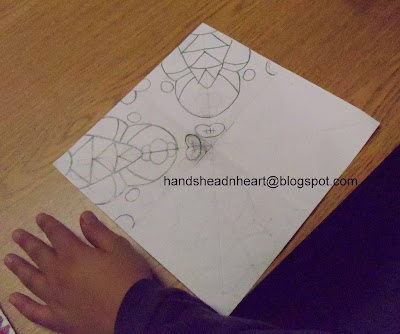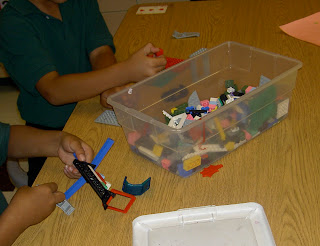We started by making color wheels & mixing secondary colors with crayon first then followed with watercolor. I took time to demonstrate my painting routines, the properties of watercolor, how to hold a brush and how to rinse/wipe a brush without creating the look of a waterpark on the table. You know - the important stuff..
In the third class, I had a hands-on demo showing them how to create line/shape patterns on paper strips (approx. 1 1/2" x 9") using secondary colors. Students only had access to primary watercolors for this project so they were expected to mix their secondary colors on the paper as they go. I prefer to use the separate pans of color rather than a set - MUCH easier to keep clean! Be sure to demo how they need to write their name & class on the back of strips BEFORE painting.


I gave them 2 full class periods to paint 10 strips while frequently checking for understanding: Are they mixing secondary colors? Are they creating pattern?
The following class, there was a hands-on demo to show the weaving process. We used the tabby weave (under 1 warp, over 1 warp). This reinforces the idea of pattern - "over one, under one, over one, etc". Our first graders have been learning about ABAB patterns in 1st grade math so this was just review for most of them and a way for them to apply what they've learned in their classroom with what we were doing in Art. Classroom teachers were happy they had the extra practice!
Once they had 10 strips painted, I assessed for learning (visible pattern, use of secondary colors) and stapled at one end their choice of 5 strips onto construction paper.




Students weave the other 5 strips between the stapled warp strips. After the weaving is completed, staple the other end of the warp strips to secure the weaving. The finished weavings looked great. For those who didn't complete 10 painted strips in the allotted time (due to absences or slowpoke syndrome), they had to substitute solid color construction paper strips in the secondary colors to experience the weaving process.




































































































































